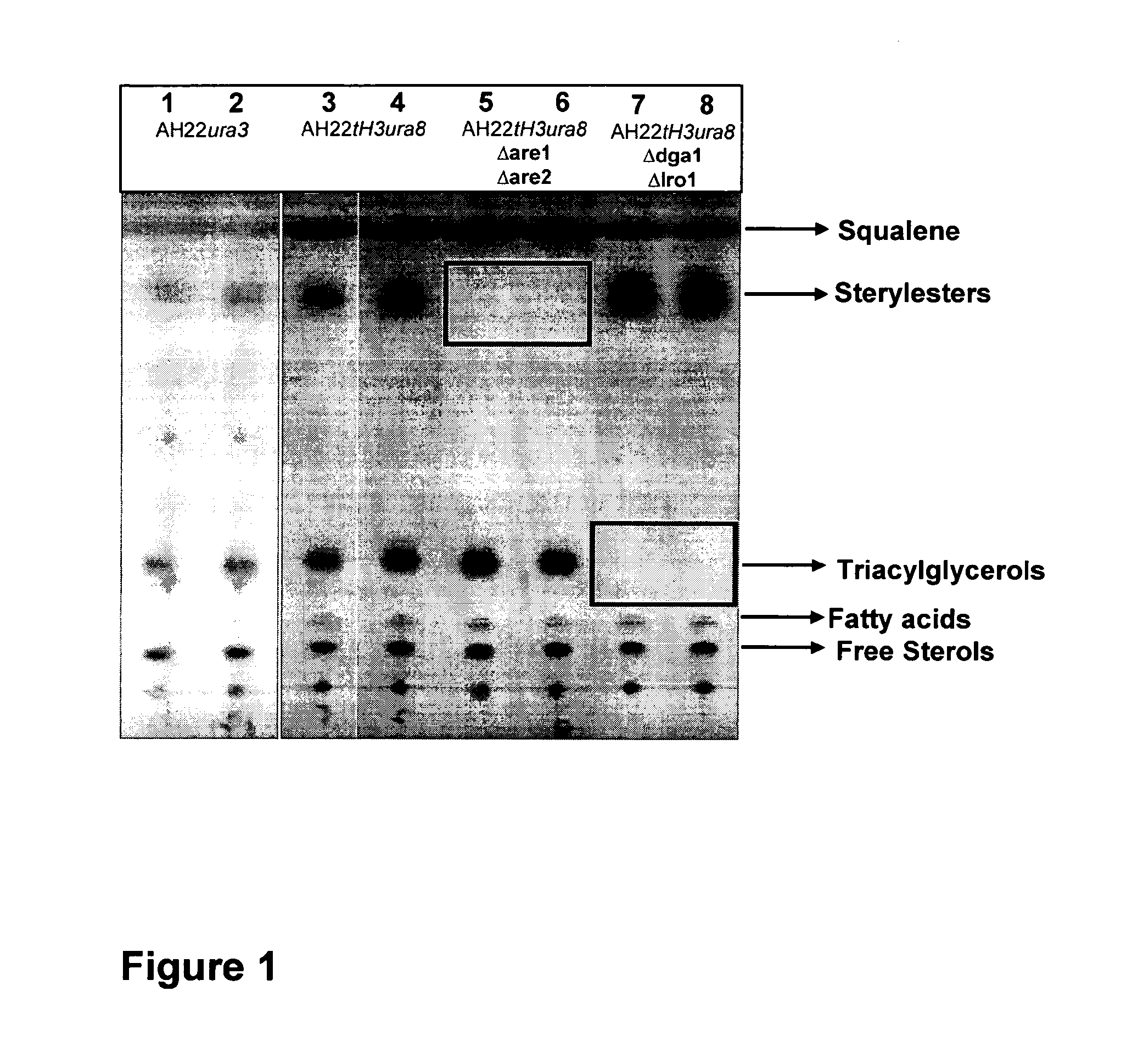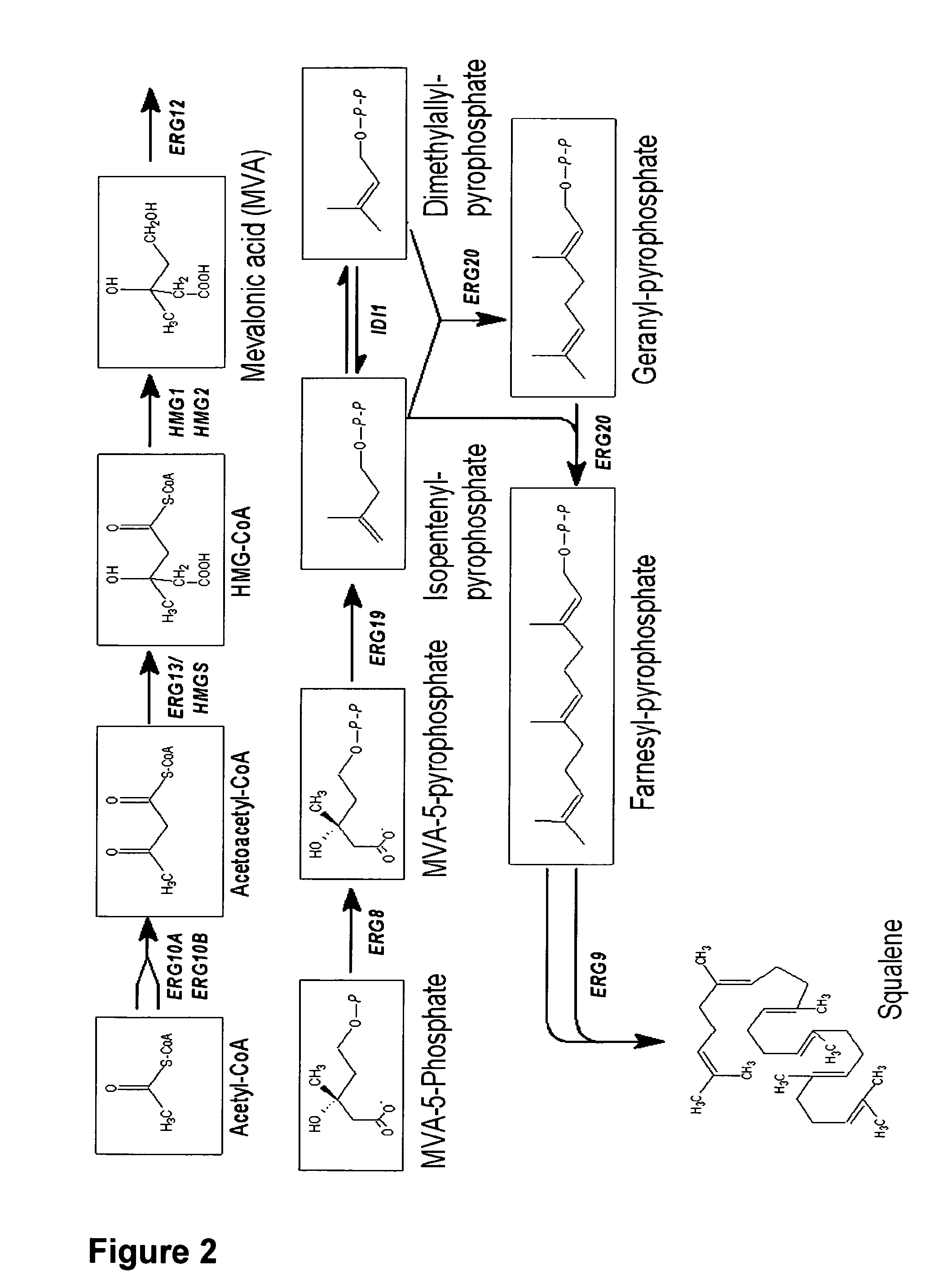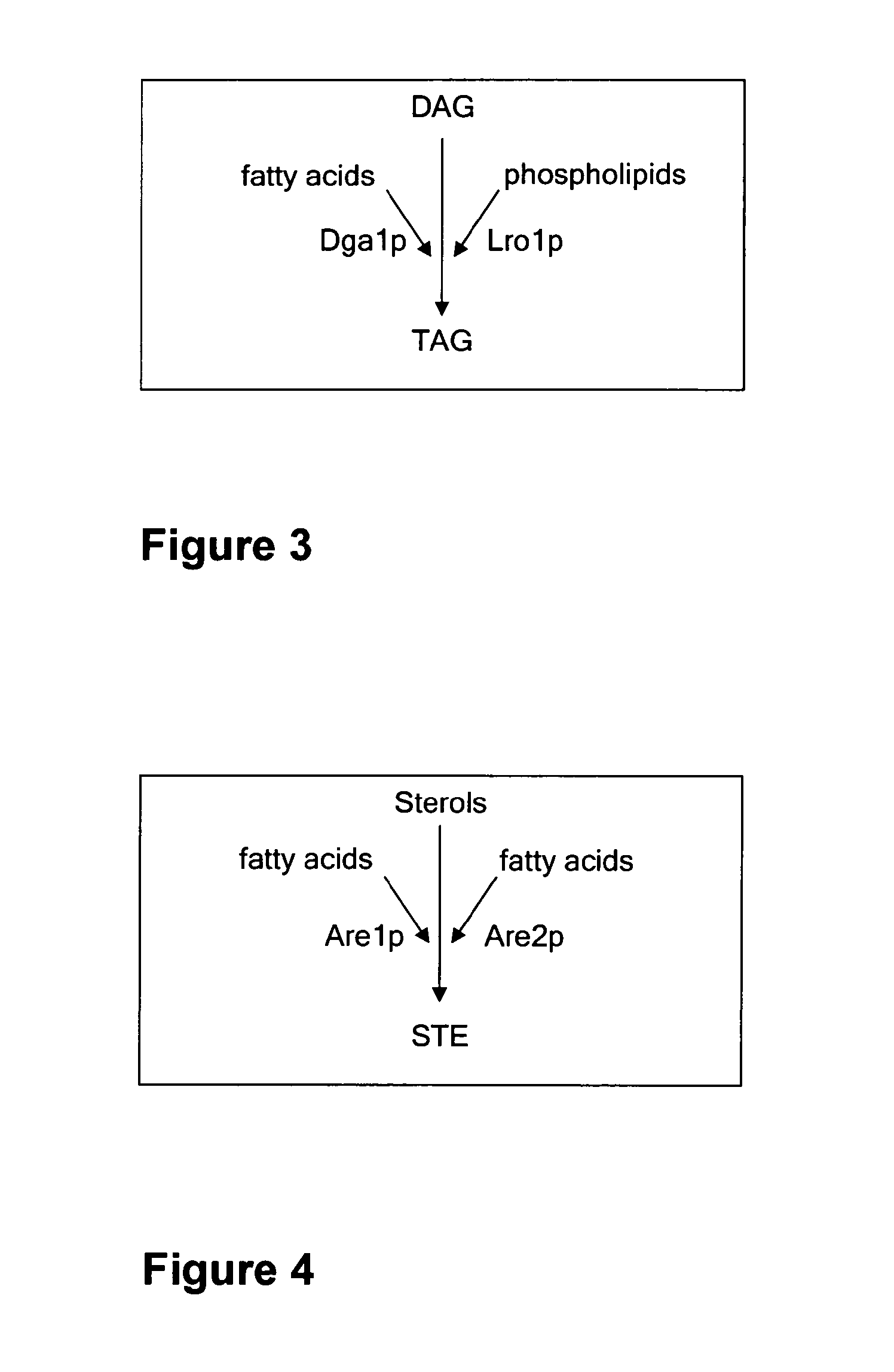Genetically modified organism for the production of lipids
a technology of lipids and non-mammalian organisms, applied in the field of genetically modified non-mammalian organisms, can solve the problems of high cost, laborious, and inability to purify, and achieve the effect of improving the purity of obtained lipid compounds, reducing the cost of purification, and improving the efficiency of the purification process
- Summary
- Abstract
- Description
- Claims
- Application Information
AI Technical Summary
Benefits of technology
Problems solved by technology
Method used
Image
Examples
example 1
[0108]Deletion of the Genes ARE1 and ARE2 in S. cerevisiae AH22ura3
[0109]The vector pUG6 (Güldener U, Heck S, Fiedler T, Beinhauer J D and Hegemann J H (1996). A new efficient gene disruption cassette for repeated use in budding yeast. Nucleic Acids Res 24 2519-24) has been used to delete the genes ARE1 and ARE2. The deletion of both genes has been done successively by the same method. At first ARE1 has been deleted and afterwards ARE2. After plasmid preparation, a fragment of pUG6 has been amplified by PCR to obtain a tool consisting of IoxP-kanMX-IoxP. Primers have been constructed to fuse 5′ and 3′ sequences of ARE1 respec. ARE2 coding sequences to the IoxP regions of pUG6 vector.
[0110]The resulting PCR product consists of a KanR gene, IoxP sites and ARE1 respec. ARE2 homologous regions for the integrative transformation in S. cerevisiae AH22ura3. Homologous recombination in yeast leads to the deletion of the target sequence.
[0111]Resistance against G418 has been used for selecti...
example 2
[0113]Deletion of the DGA1 and LRO1 in S. cerevisiae AH22ura3
[0114]The vector pUG6 (Guldner et al., 1996) has been used to delete the genes DGA1 and LRO1.
[0115]The deletion of both genes has been done successively by the same method. At first DGA1 has been deleted and afterwards LRO1. After plasmid preparation, a fragment of pUG6 has been amplified by PCR to obtain a tool consisting of IoxP-kanMX-IoxP. Primers have been constructed to fuse 5′ and 3′ sequences of the DGA1 respec. LRO1 coding sequences to the IoxP regions of pUG6 vector.
[0116]The resulting PCR product consists of a KanR gene, IoxP sites and DGA1 respec. LRO1 homologous regions for the integrative transformation in S. cerevisiae AH22ura3. Homologous recombination in yeast leads to the deletion of the target sequence.
[0117]Resistance against G418 has been used for selection of positive clones. The DGA1 respec. LRO1 coding region has been deleted in this yeast strain. To prepare the strain for the deletion of further gen...
example 3
[0120]Deletion of the Genes DGA1 and LRO1 in S. cerevisiae AH22ura3are1are2
[0121]The vector pUG6 (Gul dner et al., 1996) has been used to delete the genes DGA1 and LRO1.
[0122]The deletion of both genes has been done successively by the same method. At first DGA1 has been deleted and afterwards LRO1. After plasmid preparation, a fragment of pUG6 has been amplified by PCR to obtain a tool consisting of IoxP-kanMX-IoxP. Primers have been constructed to fuse 5′ and 3′ sequences of the DGA1 respec. LRO1 coding sequences to the IoxP regions of pUG6 vector.
[0123]The resulting PCR product consists of a KanR gene, IoxP sites and DGA1 respec. LRO1 homologous regions for the integrative transformation in S. cerevisiae AH22ura3. Homologous recombination in yeast leads to the deletion of the target sequence.
[0124]Resistance against G418 has been used for selection of positive clones. The DGA1 respec. LRO1 coding region has been deleted in this yeast strain. To prepare the strain for the deletion...
PUM
| Property | Measurement | Unit |
|---|---|---|
| voltage | aaaaa | aaaaa |
| voltage | aaaaa | aaaaa |
| volume | aaaaa | aaaaa |
Abstract
Description
Claims
Application Information
 Login to View More
Login to View More - R&D
- Intellectual Property
- Life Sciences
- Materials
- Tech Scout
- Unparalleled Data Quality
- Higher Quality Content
- 60% Fewer Hallucinations
Browse by: Latest US Patents, China's latest patents, Technical Efficacy Thesaurus, Application Domain, Technology Topic, Popular Technical Reports.
© 2025 PatSnap. All rights reserved.Legal|Privacy policy|Modern Slavery Act Transparency Statement|Sitemap|About US| Contact US: help@patsnap.com



